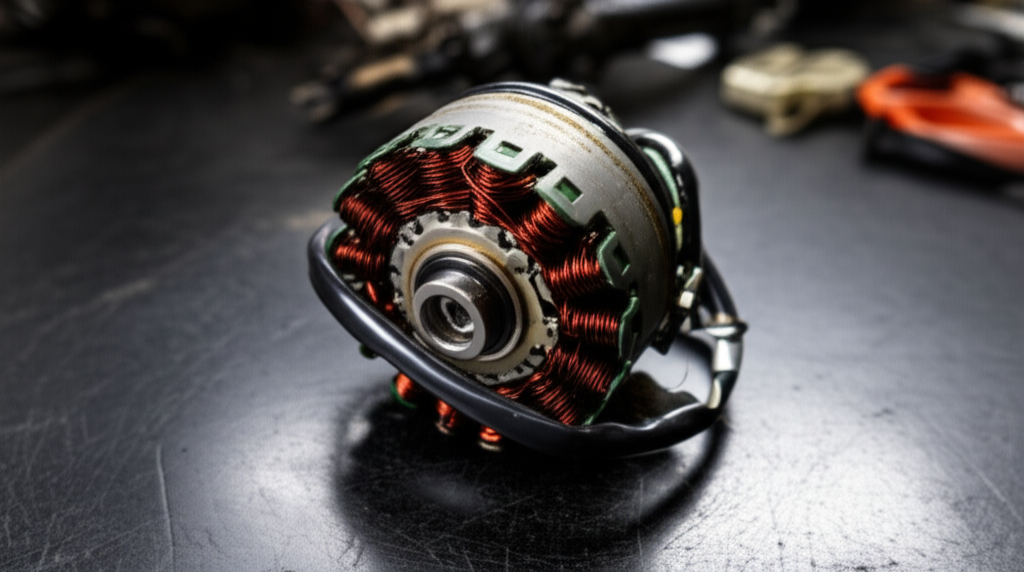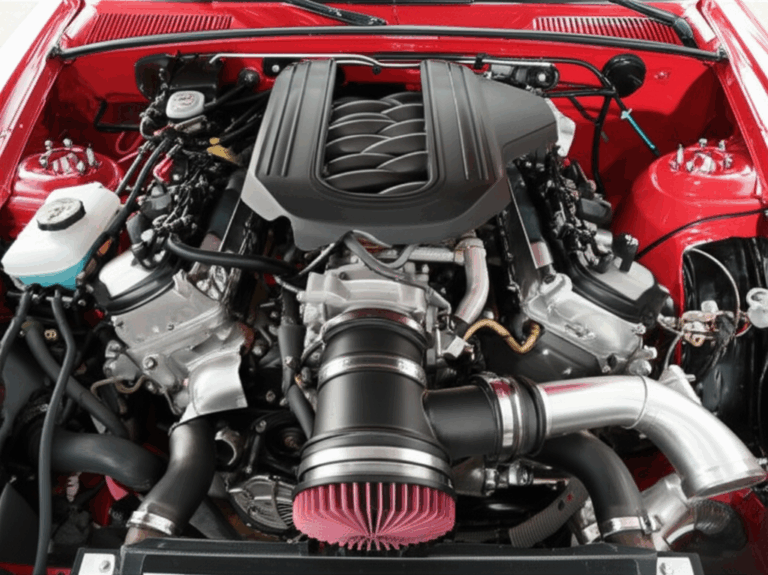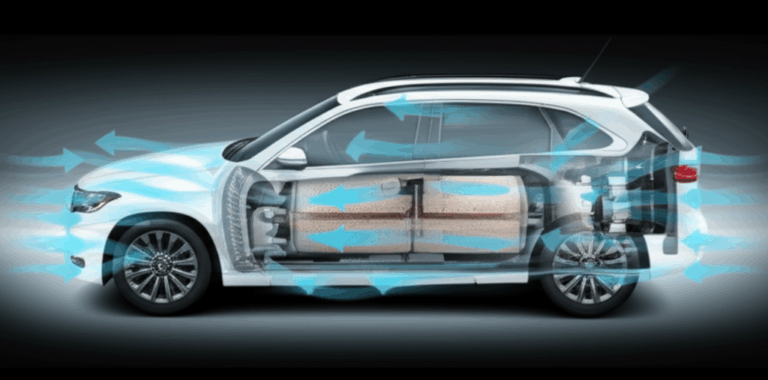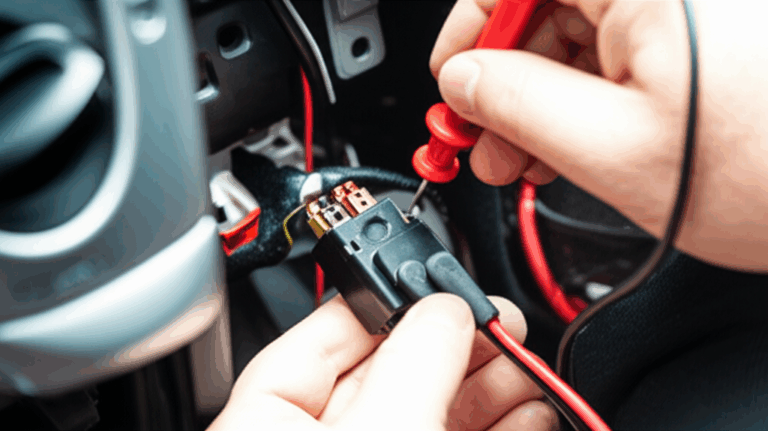
How Long Does a Stator Last? Understanding Lifespan & Maximizing Durability
A stator helps your engine make power and charge your battery. If it fails you can get stuck. In this guide I show you how long a stator lasts, why it fails, how to test it, and how to make it last longer. I also show you how better parts can help. Read this if you want fewer dead batteries and more happy miles.
Table of Contents
- What is a stator and what does it do
- How long does a stator last in cars
- How long does a stator last in motorcycles
- How long does a stator last in generators and small engines
- What key factors reduce stator life
- What are the common symptoms of a bad stator
- How do you test a stator with a multimeter
- How can you make a stator last longer
- When should you replace a stator and what does it cost
- Do OEM and aftermarket stators last the same
- What about materials and lamination quality
- FAQs
- Summary of key points
- References
What is a stator and what does it do?
Think of the stator as the still half of an electric machine. It sits around the rotor. The rotor spins. The stator stays put. Together they make power. That is the simple picture of rotor and stator interaction.
So what does a stator do? In an alternator or generator it makes AC power in its windings. A rectifier then turns AC into DC for your battery. In a motor it acts the other way. The stator creates a magnetic field that spins the rotor. This field comes from copper wire wrapped on an iron core. We call these wires stator windings. The core can use thin sheets of steel called laminations. I will show you why that matters for stator material durability.
You will see different types of stators. A single phase stator. A three phase stator. A brushless motor stator used in BLDC motors. A brushed motor stator used in power tools. Cars and trucks use alternators with three phase stators. Motorcycles can use a flywheel magnet rotor and a fixed three phase stator. Small engines and marine engines use simple charging stators too. EV motors use advanced designs with tight specs.
Problem: You need a clear view of the stator.
Agitate: If you do not know what it does you chase ghosts when lights go dim.
Solution: Learn the basics now. You can test faster and fix the right part.
How long does a stator last in cars?
In most cars the stator lives inside the alternator. You can expect the average lifespan of an alternator to be 7 to 10 years or about 100,000 to 150,000 miles. This is a typical stator lifespan for many drivers. Alternator life vs stator life can be close since the alternator is often replaced as a unit.
Driving style matters. Highway miles mean cooler and smoother running. City miles mean heat and stop and go. Under hood heat and high electrical load both add stress. If you run lights, heated seats, a loud audio amp, and other accessories you add electrical load stator stress. The stator handles it for a while then insulation ages. That is when stator insulation breakdown can start.
You also have related parts that matter. The voltage regulator and stator life go hand in hand. If the regulator fails it can overcharge or undercharge. Rectifier failure affects stator heat as well. Bad diodes force more current in the windings. A bad battery affecting stator life is real too since a weak battery makes the alternator work harder. That extra work turns into heat which speeds engine heat stator degradation.
How long does a stator last in motorcycles?
Motorcycle stator longevity varies more. I have seen 30,000 to 60,000 miles for many bikes. Some last 5 to 8 years. Some fail early. Why do stators burn out on bikes more often? Heat and tight space. Many bikes use air-cooled engines. Air-cooled stator life drops if airflow is poor. Oil-cooled stator life can be better if the oil stays clean and cool.
Riding style also matters. High RPM and hard use add heat. Long rides in traffic add heat. Add-on lights or heated gear add load. Faulty rectifier/regulator units on some models add heat as well. I have seen common motorcycle stator failures on certain Yamaha, Honda, Kawasaki, Suzuki, and Harley-Davidson bikes. On some forums riders note that an upgraded VRR helps. Testing regulator rectifier right after a stator swap can save you from a repeat failure.
Is your motorcycle not charging? You might see dim headlights bad stator signs. Your battery light may flicker. You may smell a burning smell electrical stator odor. You may have engine misfires stator issue or stalling at low speed. These are common stator issues and point to faulty stator diagnosis steps you can do with a meter.
How long does a stator last in generators and small engines?
Generator stator life depends on hours. A small engine generator used for home backup can last 500 to 1,500 operating hours. Industrial generators last longer with care. How many hours does a generator stator last? It depends on load and cooling. If you run near max output in a hot shed your stator cooks. If the generator output is low you could have shorted windings or open windings.
Portable units hate dust and moisture. That dirt gets on windings. Heat builds up. Insulation cracks. You get a short circuit stator damage event. Or you get open circuit stator symptoms like no charge at all. Marine stator life ranges from 500 to 1,000 hours in harsh salt use and 5 to 10 years in mild use. Salt eats metal. Vibration shakes the windings. Marine engine charging failure shows up as a dead battery after a long idle.
ATV stator life, snowmobile stator life, and jet ski stator life follow the same rules. High RPM, heat, water, and mud add stress. Power tool stator life depends on duty cycle and dust. Industrial motors can run for 15 to 20 years or more with the right maintenance plan. That is electrical stator lifespan at its best when you keep bearings smooth and windings clean.
What key factors reduce stator life?
Heat is the number one killer. Overheating stator lifespan drops fast with high temperature. Every 10°C rise can cut insulation life in half. Heat comes from engine heat, poor cooling, and heavy load. Heat also comes from voltage spikes and stator life takes a hit when the system sees surges.
Electrical overload matters. Excessive electrical draw from add-ons makes the stator push more current. A faulty voltage regulator or rectifier can overload the windings. A weak battery can force the stator to work at full tilt. That leads to stator winding failure.
Physical wear and vibration count too. Insulation breakdown over time comes from rubbing and shaking. Corrosion and environmental exposure hurt copper and the iron core. Oil sludge can coat an oil cooled stator and block heat flow. A dirty wiring harness and bad grounds create hot spots.
Manufacturing quality plays a big role. Quality of stator affecting life is real. Good copper, tight windings, and clean slots help cooling. The iron core needs good laminations to reduce eddy losses. This cuts heat. OEM vs aftermarket stator life can vary based on materials and process. Good aftermarket parts can match or beat OEM if they use strong materials and good insulation.
Problem: Your stator faces heat, load, and shake.
Agitate: Any one of these can shorten life. Put them together and life drops fast.
Solution: Control heat, control load, and use quality parts.
What are the common symptoms of a bad stator?
Watch for these signs of a bad stator:
- Battery charging issues like a dead battery or low voltage after a ride
- Dim or flickering lights at idle and brighter at high RPM
- Warning lights like a battery light or check engine light on some EFI bikes
- Engine performance problems like misfires, stalling, or no start
- A burning smell or visible smoke near the stator cover
- Intermittent power loss stator events at random times
Automotive stator problems look like weak charge and a glowing battery light. Common car alternator stator failures can also show as whining noise if the alternator struggles. In generators you may see generator output low stator signs under load. In marine setups you may see failed charging after a slow troll.
How do you test a stator with a multimeter?
You can test a stator with simple tools. A basic multimeter works. Here are the three core tests.
1) Stator resistance test for stator windings
Use ohms mode. Unplug the stator leads. Check phase to phase. Compare to stator winding resistance specs from the service manual. All readings should match within a small range. If you see a big difference you may have an open winding.
2) Ground test stator
Check each lead to ground. You should see no continuity. If you see low resistance to ground the stator is shorted.
3) AC voltage test stator
With the engine running check AC voltage across each pair. At idle you should see some output. At a set RPM you should see a higher number. Checking stator output versus specs tells you if the stator is weak. Use care around moving parts.
Write down readings. Compare to your vehicle make model stator life and spec in the manual. If the stator passes the tests look at the VRR. Testing regulator rectifier matters since a bad VRR can mimic a bad stator.
How can you make a stator last longer?
Use preventative stator maintenance. Keep the electrical system healthy. Clean battery terminals. Check battery state with a load test. Replace a weak battery. This reduces extra work on the stator. Check grounds and fuses. Inspect relays and the wiring harness for damage. Troubleshooting charging issues early saves stator life.
Manage heat. This is heat management for stators. Keep oil at the right level and change it on time on oil cooled bikes. Keep the stator cover area clean. Make sure cooling passages are clear. Do not block airflow. Improving stator cooling helps a lot.
Avoid overload. Be mindful of add-on lights and heated gear. Use LED lights where you can. They cut draw. Use proper wiring and connections. Avoid cheap accessories that cause voltage spikes. Preventing premature stator failure comes from simple habits.
How to prolong stator life is simple. Keep it cool. Keep it clean. Keep loads in check. Do regular checks. Consistent maintenance electrical steps pay you back with long service.
When should you replace a stator and what does it cost?
Replace the stator when tests show it is shorted or open or when AC output at the set RPM is below spec. Also replace it when insulation is burned or the windings are black. Address the root cause. Do not skip the VRR or battery. Fix the cause so the new stator does not fail again. This is the stator replacement timeline decision point.
DIY stator replacement difficulty ranges from moderate to hard. Some bikes let you pull a cover and swap it. Some cars need alternator removal or full alternator swap. In many cars you replace the whole alternator not just the stator. Cost to replace car alternator varies by make. Pro service can be more due to labor.
Stator replacement cost for bikes varies. Cost to replace motorcycle stator can range from a few hundred dollars to over a thousand with labor. Professional stator repair cost for industrial gear can be higher. Is stator replacement worth it? Yes when the machine is in good shape and the cause of failure is fixed. If not you may see what causes stator to fail repeatedly and waste money.
Do OEM and aftermarket stators last the same?
OEM parts follow original specs. They fit and often carry a clear warranty. Aftermarket units can be better or worse. OEM vs aftermarket stator life depends on copper quality, insulation class, slot fill, and the lamination steel. The winding process matters. The varnish dip and cure cycle matter. All of these affect lifespan of stator windings.
I look for material details. I look for high grade copper, solid insulation, and good lamination stacks. I look for a good warranty. I read reviews on common motorcycle stator failures and how the replacement held up. I also check if the vendor explains heat and load limits. Quality replacement parts make a real difference in extending component lifespan.
Problem: You cannot tell a good stator from a weak one just by color.
Agitate: Pick wrong and you do the job twice.
Solution: Buy from a proven source that shows materials, process, and specs.
What about materials and lamination quality?
Materials drive durability. Copper must be pure. Insulation must hold up under heat. The iron core must be built with thin, low loss laminations. That reduces heat from eddy currents. Better laminations cut waste heat and boost electrical system health stator outcomes.
If you build motors and generators you already know this. If you buy parts you can still choose well. Learn how core materials affect life. The quality of the stator core lamination directly impacts performance and heat. Good lamination stacks reduce losses. That helps windings run cooler. You can also look at the motor core laminations that support both stator and rotor designs in many machines. In high duty gear the rotor matters too. Solid rotor core lamination design helps keep the air gap clean and losses low. The base steel matters as well. High grade electrical steel laminations can cut loss and heat.
We see this in BLDC motors as well. A bldc stator core with thin laminations runs cool. Brushless motor stator designs are sensitive to core loss. Magnets affecting stator life come into play too. Strong rotor magnets push more flux. If the core is weak heat rises. In big power tools, in industrial motors, and in EV motors this material game decides life. Good materials help you prevent early failure before it starts.
How long should a new stator last?
If you fix the root cause a new stator should match or beat the typical numbers. In cars you can see 7 to 10 years. In bikes you can see 5 to 8 years. In small generators you can see 500 to 1,500 hours. In marine setups you can see 500 to 1,000 hours. Industrial motors can run 15 to 20 years or more with a plan.
How many miles does a stator last in a motorcycle? Many riders see 30,000 to 60,000 miles. Some see more. If your battery, VRR, and wiring stay healthy the stator enjoys an easier life. Your engine type stator lifespan also matters since air cooled designs run hotter than liquid cooled ones.
What happens when a stator goes bad? Lights dim. The battery dies. The engine may misfire or stall. The bike may quit in traffic. You feel annoyed and maybe a bit scared. Fix the cause then replace the stator. You can ask can a stator be repaired. In some cases shops can rewind a stator. It can work if done right. Make sure they use good insulation and proper varnish.
Quick lifespan guide by application
Here is a simple guide you can use today.
| Stator Application | Average Lifespan Expectancy | Notes on Life and Use |
|---|---|---|
| Automotive alternator stator | 7 to 10 years or 100,000 to 150,000 miles | Heat and load drive life. Often replaced as full alternator. |
| Motorcycle stator | 5 to 8 years or 30,000 to 60,000 miles | VRR health and engine cooling matter a lot. |
| Small engine generator stator | 500 to 1,500 hours | Duty cycle and airflow are key. |
| Marine engine stator | 5 to 10 years or 500 to 1,000 hours | Salt and vibration reduce life. |
| Industrial motor stator | 15 to 20 years plus | Clean, cool, and balanced loads extend life. |
Use this as a starting point. Your results can be better with care.
What tools and specs do you need for testing?
You can test with a multimeter, a good service manual, and a safe work space. The manual gives stator winding resistance specs and AC output targets at set RPM. CDI and EFI systems can affect idle speed so check the spec for your model. Many service books from Yamaha, Honda, Harley-Davidson, Kawasaki, and Suzuki list clear numbers. Keep notes. Diagnostics work better when you write down each step.
Use the meter to check resistance and ground. Use AC volts to check output. Check the battery with DC volts. Look at the wiring harness, fuses, and relays. This simple diagnostics plan can solve most common electrical failures vehicles face in the charging system.
PAS in action: Meet the need and pick a strong solution
Problem: Your bike will not charge. Your car battery light glows. Your generator quits under load.
Agitate: You miss work. Your trip ends early. You worry this will happen again.
Solution: Test the stator. Check the VRR. Fix bad grounds. Replace weak parts with quality. When you must buy new core parts look for good laminations and solid windings. This is how you meet the need and stop repeat failures.
I have helped many riders and techs do this. We focus on heat and load. We clean wiring. We test the battery and the VRR. We pick parts with strong cores and clean coil work. We avoid cheap fixes. We keep the stator cool and happy.
FAQs
Is my stator going bad?
Look for battery charging problems stator signs. Dim lights at idle. A dead battery after a ride. A burning smell near the stator cover. If a multimeter test shows low AC output or a short to ground the stator is failing.
Why are stators so expensive?
Copper costs money. Good insulation and good iron cores cost money. The build takes time. If you buy a full alternator you pay for bearings and the diode pack too. Quality parts last longer so you pay more up front and save time later.
What does a stator winding do?
It carries current and makes a magnetic field. This field makes power when the rotor moves past the wires. Windings must be tight and well insulated to avoid shorts and opens.
Can a faulty voltage regulator kill a stator?
Yes. A bad VRR can push too much current or cause voltage spikes. That heat cooks the windings. Fix the VRR at the same time you replace a failed stator.
Is stator replacement worth it?
Yes if you love the machine and fix the root cause. You avoid repeat failure and enjoy more miles or hours.
Related systems you may hear about
You may hear about CDI ignition boxes on older bikes. You may hear about EFI on modern bikes and cars. Both systems care about clean power. Clean power comes from a healthy charging system with a strong stator, a good VRR, and a solid battery. You may also hear about magnets, copper wire, iron cores, and insulation classes. These words matter because they all tie back to heat and life.
You may also see parts like fuses and relays in your wiring harness. They protect the system. If they fail you can think it is a stator when it is a blown fuse. Use simple troubleshooting to avoid a bad guess. If you run extra lights or a sound system watch your electrical load. Your engine will thank you.
Motorcycle electrical system guide tips
- Keep connectors clean and tight
- Use dielectric grease where the manual says to
- Put a voltmeter on the bike if you add many accessories
- Avoid high draw items at idle
- Give the system a break on hot days
These steps are simple. They can add years to your stator life expectancy.
Generator maintenance tips
- Keep vents clear for airflow
- Clean dust and dirt from covers
- Do not overload the generator
- Use a surge protector to avoid spikes
- Check bearings and listen for noise
These tips help your generator stator life and the whole unit.
A short word on transformers
While not the same as a stator a transformer also uses laminated steel and copper windings. The core quality matters in a transformer too. Good materials cut loss and heat which boosts life. This is why so many builders care about steel grades, lamination thickness, and core shape.
References
- OEM service manuals and wiring guides from Yamaha, Honda, Harley-Davidson, Kawasaki, and Suzuki
- Automotive alternator service guides from major suppliers such as Denso and Bosch
- Electrical Apparatus Service Association (EASA) resources on motor and generator maintenance
- Industry texts on insulation systems and thermal aging in electric machines
- Marine engine service literature from major outboard and inboard makers
Summary of key points
- Heat is the main enemy of stator lifespan
- Load, bad VRR, and weak batteries add stress
- Test with a multimeter: resistance, ground, and AC output
- Fix the cause before you replace the stator
- Use quality materials and laminations to cut heat
- Follow simple maintenance to avoid premature failure
- Pick parts from trusted sources and check specs
- A cared for stator can last many years and many miles
Notes on materials and where to learn more
If you design or buy cores and windings you can learn a lot from material pages. Read about strong lamination stacks and how they cut losses. These pages explain how better steel and better stacks help motors, alternators, and generators run cool and last long.
- Learn how stator cores are built and why lamination quality matters: stator core lamination materials and options
- See how full motor stacks come together for both stator and rotor: high performance motor core laminations
- Explore how rotor sheets affect the air gap and efficiency: precision rotor core lamination
- Understand the base steels used for low loss cores: premium electrical steel laminations
By choosing better materials you lower heat. You raise durability. You extend the life of your stator and the whole charging system.








